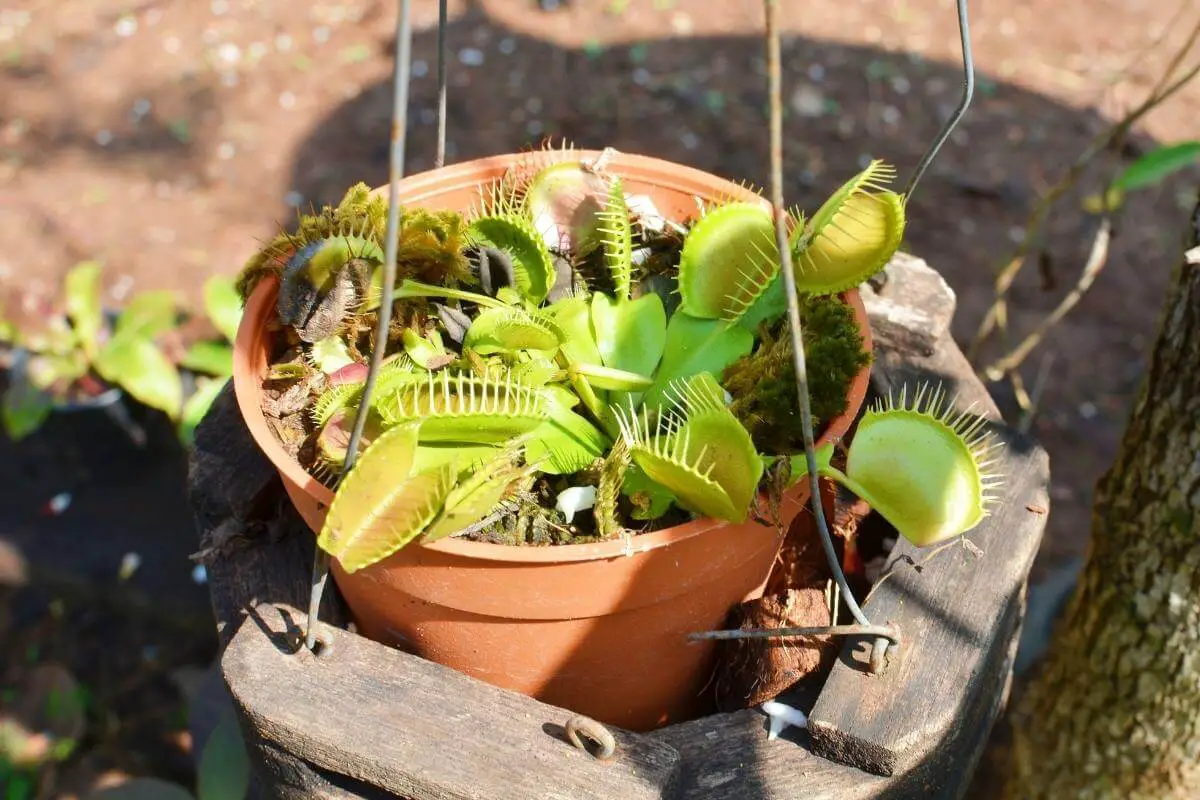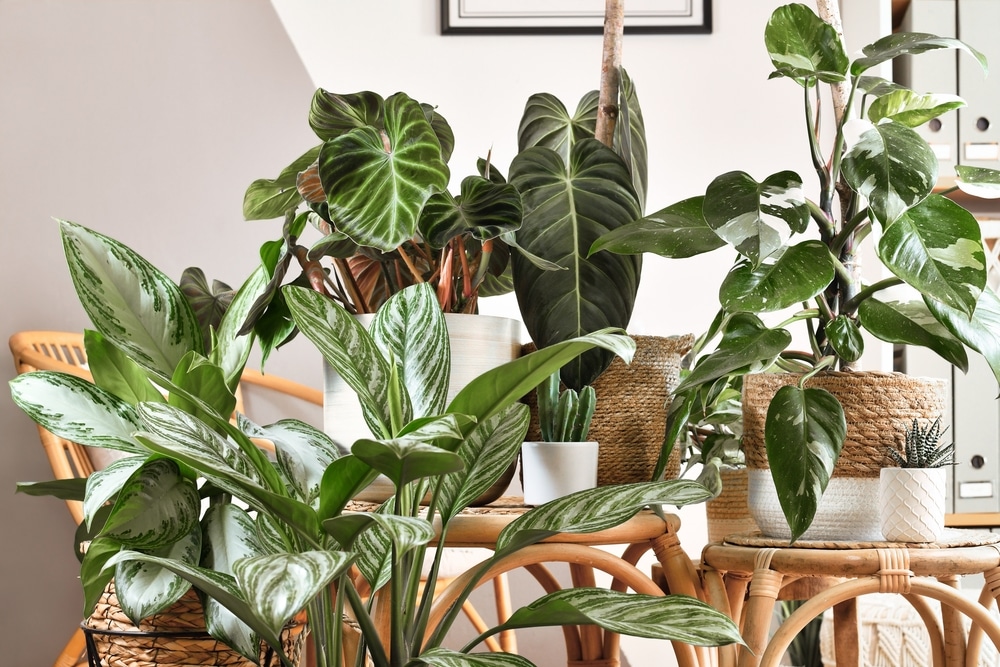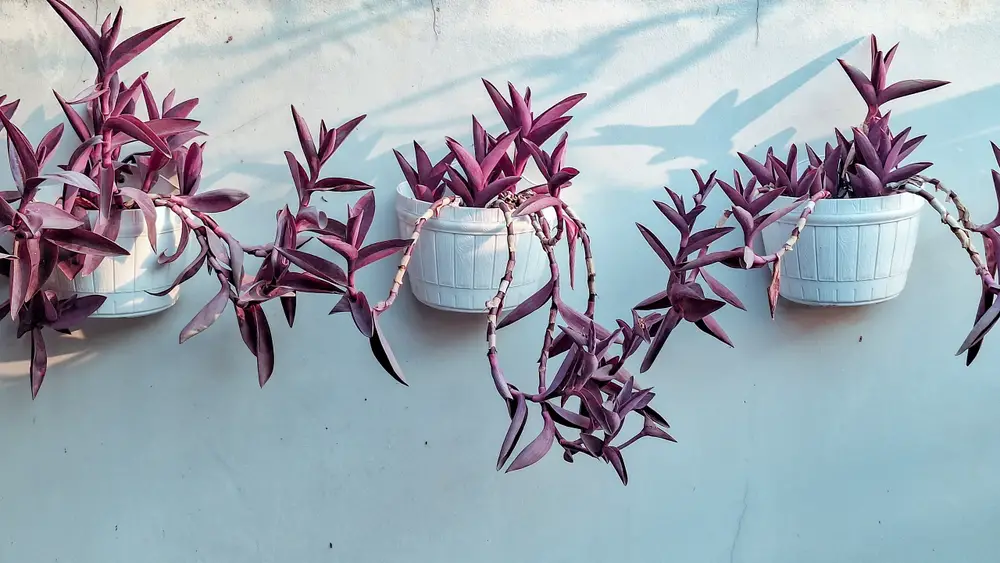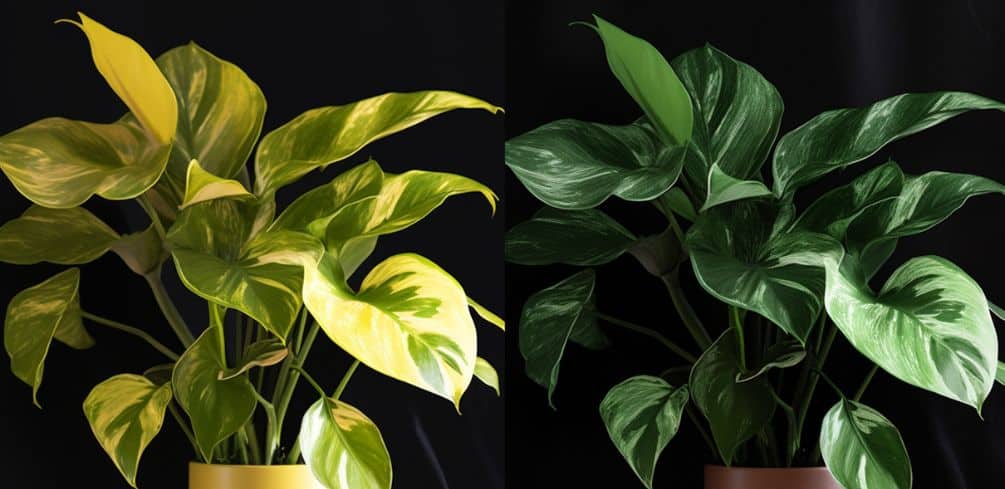A Venus flytrap is an extraordinary plant.
This carnivorous plant is eye-catching and a fantastic method of controlling pests.
However, insects alone will not be enough to keep them alive.
Hence, they will need enough water to survive just like any other plant.
The amount of water needed by your plant depends on a lot of factors, for instance, stage of growth, species, and prevailing weather conditions. As such, you should adjust the watering frequency accordingly. However, it is important to remember that a venus flytrap is a bog plant (semiaquatic and thrives in soft wet land). Therefore, always keep the soil wet but not waterlogged.
If watered too frequently, it can develop root rot, which eats away the plant’s roots and eventually destroys them.
Additionally, if infrequently watered or too little, it will be significantly weakened and will begin to sag, droop, or make the leaves dry out.
How Often to Water a Venus Flytrap?
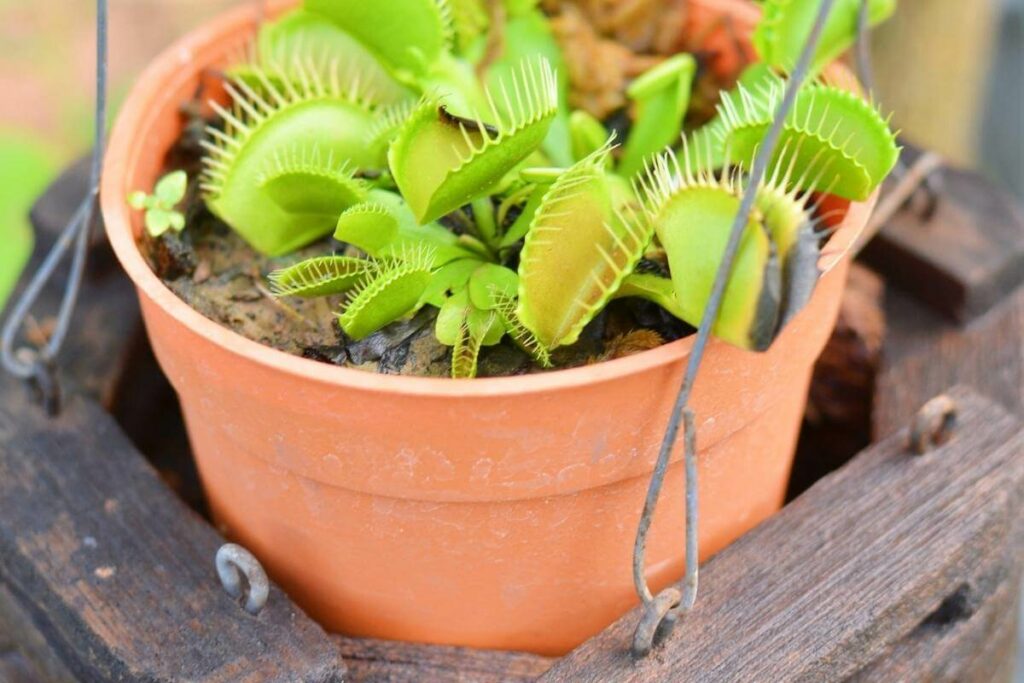
Learning how often to water a Venus flytrap (Dionaea) is incredibly important to keep a healthy and robust plant.
To water, Venus flytraps use distilled or rainfall as they aren’t tolerant to water containing dissolved minerals, salts or chlorine.
Venus flytraps should be watered enough so that their soil never dries out completely and is always damp to the touch. Depending on plant location and the climate.
Watering can vary from only 10-14 days to as frequently as every 2-3 days.
When Dionaea is dormant, keep the soil moist but not soggy. Only a few dots of peat moss should stick to your finger when you touch the ground, and it should not feel wet.
On the other hand, it should feel damp to the touch like a moistened sponge, if grown in long-fiber sphagnum, but not so wet that it seeps water when pushed or squeezed.
During the growing season, water Venus flytraps when the soil is just barely damp.
Depending on the pot size and how hot and dry it is, this may entail watering it every day until the soil is well saturated, allowing it to dry to the point of being just damp before watering again.
Smaller Venus flytraps can dry out in a day if the weather is scorching and dry during the summer months. However, during most of the year, even the tiniest ones are routinely watered every 2 to 3 days.
Quick Tip: The soil of the Venus flytrap should be kept damp at all times. However, keeping the ground wet won’t be enough to make sure your Venus flytrap is healthy. With some time and appropriate care, you will soon have a thriving and happy plant.
How to Water a Venus Flytrap?
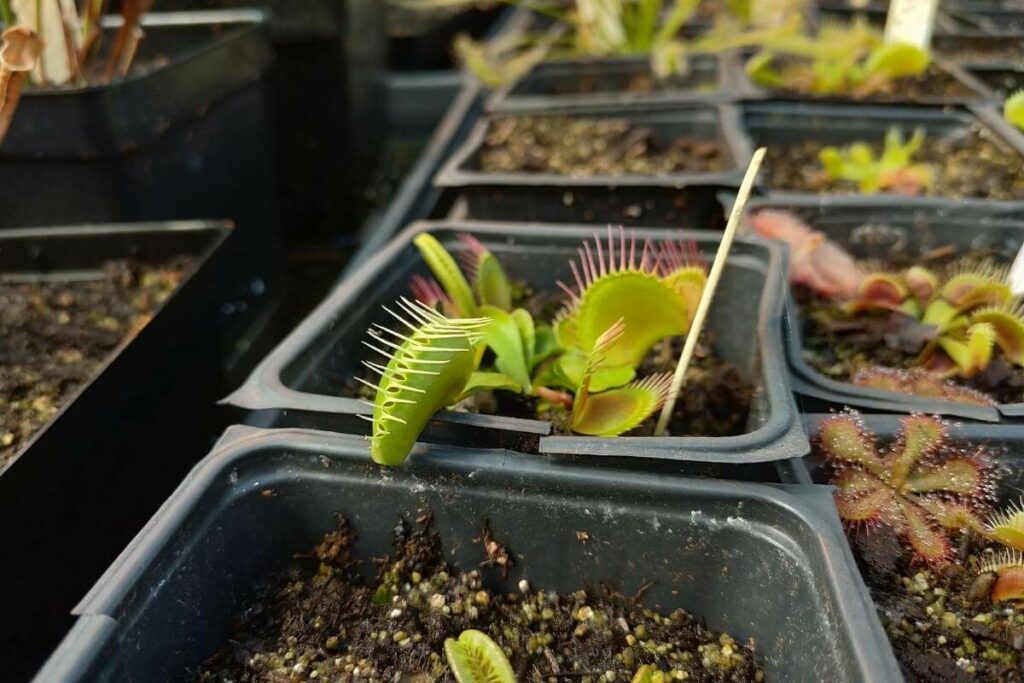
The type of pot and the soil mixture the Venus flytrap is living in can grow or kill the plant, even if watering is perfect.
Watering During Dormancy
It is best to allow the growing medium to become almost dry before watering again.
Sometimes, this may entail simply watering once or twice a month. It’s better to let the growing media dry up completely before watering again.
Keeping Venus flytraps damp during their dormancy or when the weather is cool or cold is very important.
Tray Watering
If the plant is in much direct sunlight or if you are away from your flytrap on vacation for a few days, the tray method might be your best option.
Be Careful: It’s also important to note that this method is best when the flytrap is actively growing and not during dormancy.
Drainage Holes
Make sure your Venus flytrap pot or planter has suitable drainage holes and set your pot in a tray with about 1 inch of water.
The soil should be very good at absorbing moisture, and the plant will suck water right up from the tray through the drainage holes.
If you can monitor your Venus flytrap and it’s not in as much direct sun, another method would be better for watering your plant.
Normal Watering
If you can keep an eye on your Venus flytrap, this means of watering will be the best!
It involves watering with whatever you like and monitoring how wet the media is.
Make sure it stays moist, never completely dried out, super damp, or soggy.
Factors That Affect How Much to Water a Venus Flytrap
| Factors That Affect Watering Frequency |
|---|
| Size of the plant |
| Season and dormancy |
| Humidity |
| Indoor-outdoor setting |
Size of the Plant
Most Venus flytraps are relatively small, on average about 5 inches across.
But, big or tiny, they all have one thing in common; they do not like to be overwatered or underwatered. Of course, the bigger the plant, the more water it will require.
By keeping an eye on the soil rather than on the size of the plant, you’ll easily be able to regulate watering amounts.
Just feel the soil and make sure it is damp but not soggy most of the time.
Season and Dormancy
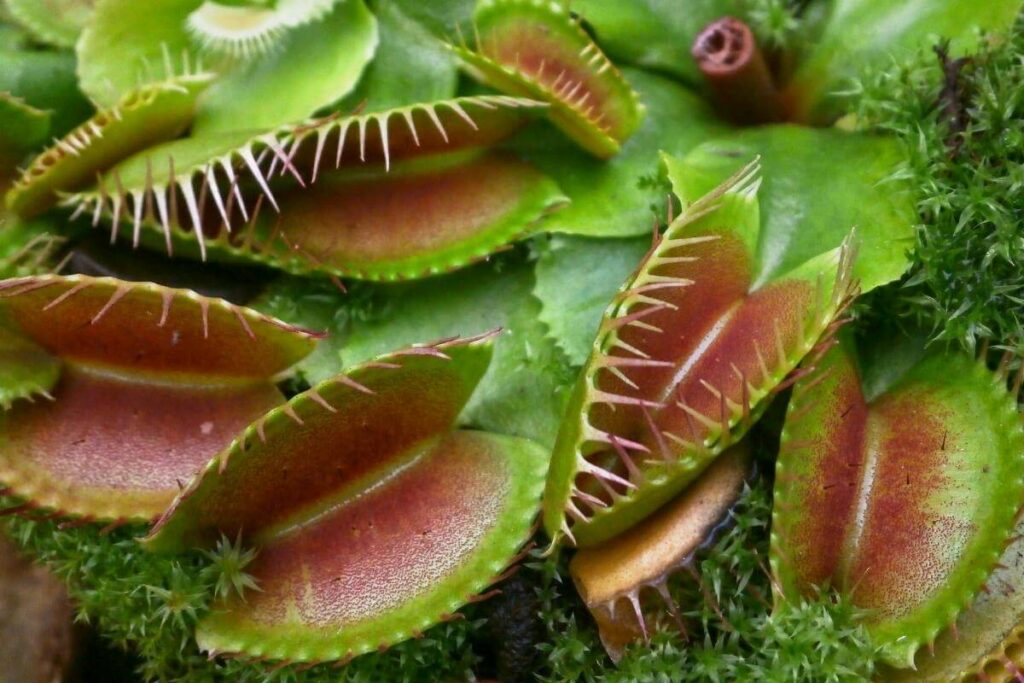
During spring, summer, and fall, the Venus flytrap watering should regularly (daily if necessary) so that its soil is always damp.
However, in winter, they cease to grow, and most of the leaves become black and die. The mechanism that causes any leftover traps to shut is no longer functional.
This is your cue that the plant is preparing for winter hibernation. At that time, water only two to three times per month, allowing the soil to become almost dry.
This will enable the plant to get the well-deserved annual rest it’s accustomed to in its natural environment.
Humidity
The Venus Fly Trap does not require exceptionally high humidity (but it needs to be over 50%); thus, it can survive in dry climates and humid locations.
However, it should be monitored closely for water evaporation and replenish their water as often as needed.
Indoor-outdoor Setting
Venus flytraps can adapt to either indoor or outdoor environments.
If your plant lives outdoors in a hot or dry climate, allow it to get only four to six hours of morning sunshine and minimize heat absorption by wrapping its pot in foil or plant them on white pots.
This will reflect light since there isn’t much water evaporation for an indoor setting; water it when the soil is almost dry.
| How Much To Water |
|---|
| The bigger the plant, the more water it will require. |
| In summer and fall water regularly. In winter water two to three times per month. |
| Water as often ensuring humidity level is over 50% |
| For outdoor settings allow it to get only four to six hours of morning sunshine and minimize heat absorption. For indoor settings water when the soil is almost dry. |
Why Is It Important to Water Venus Flytrap?
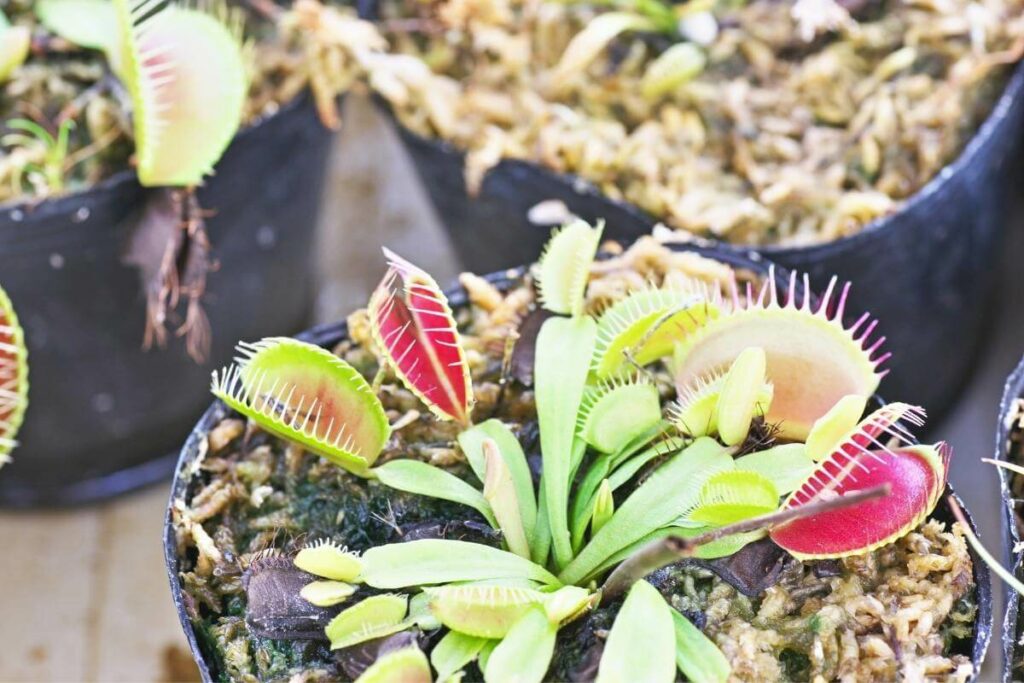
Plants are living organisms that need water to thrive and reproduce. The following are some of the reasons why water is so essential to Venus flytrap plants.
- Photosynthesis – Carnivorous plants, like all other plants, obtain their energy from photosynthesis. This is the method through which plants produce their food. They make carbohydrates with water, which are necessary for energy delivery throughout the plant. They may not be able to produce enough food to maintain healthy growth if water is scarce.
- Transpiration – This is the process through which plants lose water in the atmosphere. Water is frequently lost through stomata, which are microscopic openings on the leaves. Water evaporates into the atmosphere as it is lost, causing a cooling effect surrounding the plant. This maintains the plant’s temperature in a healthy range. The plant’s cells may begin to die if the temperature is too high.
- Nutrient Distribution – To develop properly, each portion of the plant requires different nutrients. The Venus flytrap eats insects and arachnids to obtain nutrients that are not in the environment. Water aids the transfer of these nutrients.
Final Thought
In addition to light and oxygen, the Venus flytrap needs proper watering to thrive.
To water a Venus flytrap, always employ pure water sources. It is not an aquatic nor arid plant. Hence it should not be plated under swamp-like or dry conditions.
Watering levels should also be taken to avoid overwatering and underwatering, which can harm or kill the plant.
Although it can be tricky to balance water levels when caring for a Venus flytrap, the above good watering practices will help your plant grow healthy.
Apart from the frequency of watering, plant size, type of season, and humidity influence the watering process, which impacts the survival of this plant.
